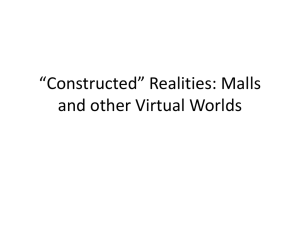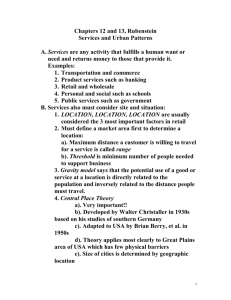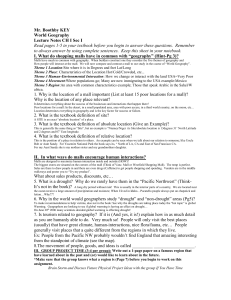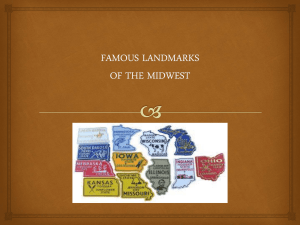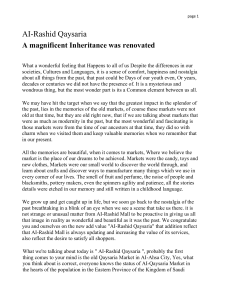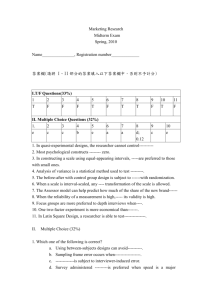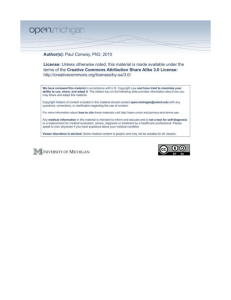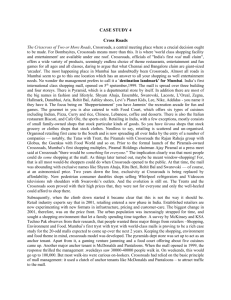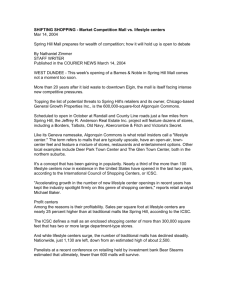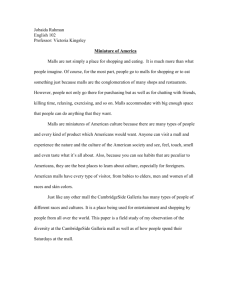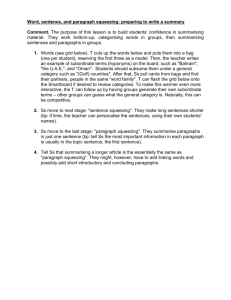*Constructed* Realities: Malls and other Virtual Worlds
advertisement
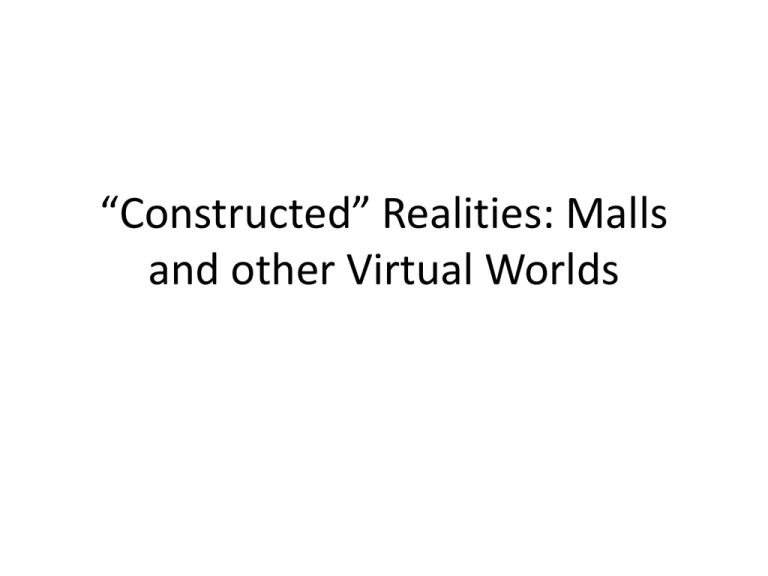
“Constructed” Realities: Malls and other Virtual Worlds Quickwrite #6 • Describe a mall that you have visited (or one that you visit regularly). Now that you have read “Grand Mall Seizure,” (p. 292) do some of the author’s observations from that essay apply to the mall you are writing about? Why or why not? What are the assumptions that this essay is making? • Many sociologists and writers of cultural criticism have written about malls as symbols of excess and of mindless consumerism. • The assumption that this essay (and other cultural criticism about malls) makes is that the way that we shop and the way that malls are structured and presented to us as destinations has a profound effect on our culture and the way we think about ourselves. Grand Mall Seizure p. 292 • What is the author’s attitude toward the Mall of America? Where do you see evidence of this attitude? • What contrast is the author pointing out with his description of the hammer in paragraph 15? • What do you think of the idea of the mall as a fantasy, a place that separates us from reality? Grand Mall Seizure Cont. • What do you think of the idea of the mall as a symbol of American stability and possibility (see paragraphs 39 and 40)? • What do you think of the concept of malls as placed that might have “served not only a community’s physical needs, but its civic, cultural, and social needs as well” (paragraph 8)? The author seems to think that malls have failed to do this. Is he right, in your opinion? Why? Preparing to Talk About “Identity in a Virtual World” p. 176 • Have you ever participated in a game that required you to make an avatar? (A character to represent you in the game.) If so, what did it look like? How and why did you make choices about what your character looked like and how he/she/it acted? How much of a reflection of you was that avatar? • If you have never made an avatar before, what would you do if you were asked to? Why? How much of you would be reflected in the character you made to represent you? “Identity in a Virtual World” p. 176 • An “avatar” is a virtual character created by a real person to represent them in a virtual environment. This essay discusses the various ways in which the avatars that people choose reflect and shape their identity, and the ways that online environments free us from social norms (a social norm is a behavior that is expected of you in order to appear “normal” or “polite”) at the same time that those social norms are carried over into the virtual world. “Identity in a Virtual World” p. 176 • This essay reports on the findings of several authors and researchers who have been researching the topic of real people and their avatars. They found… – People like the anonymity of having a character who is unlike them, but were willing to pose for the book. Why do you think this is? – People often chose characters who were “less ordinary” than their real selves. Why do you think this is? – The researchers found that men choose female avatars more often than women choose male avatars. (Which made me laugh, because this is the opposite of my experience….) Why do you think this is? Thinking further… • Other than online avatars in virtual games, what are some other ways that people can create an identity for themselves on the internet? • What are the benefits and drawbacks of a virtual identity that is somewhat different from one’s “real” identity that one presents in face to face interactions? Applications for Essay #2 • Both of these essays touch on ideas about how pop culture (in one case, a mall, in another, online games) affects the way people think about their own identities, as Americans or as “improved versions” of themselves. Notice how both of these authors paint a clear picture of the situation and thoroughly explore why the observations that have made matter. These essays can serve, if not as sources, than as models for your own writing.
